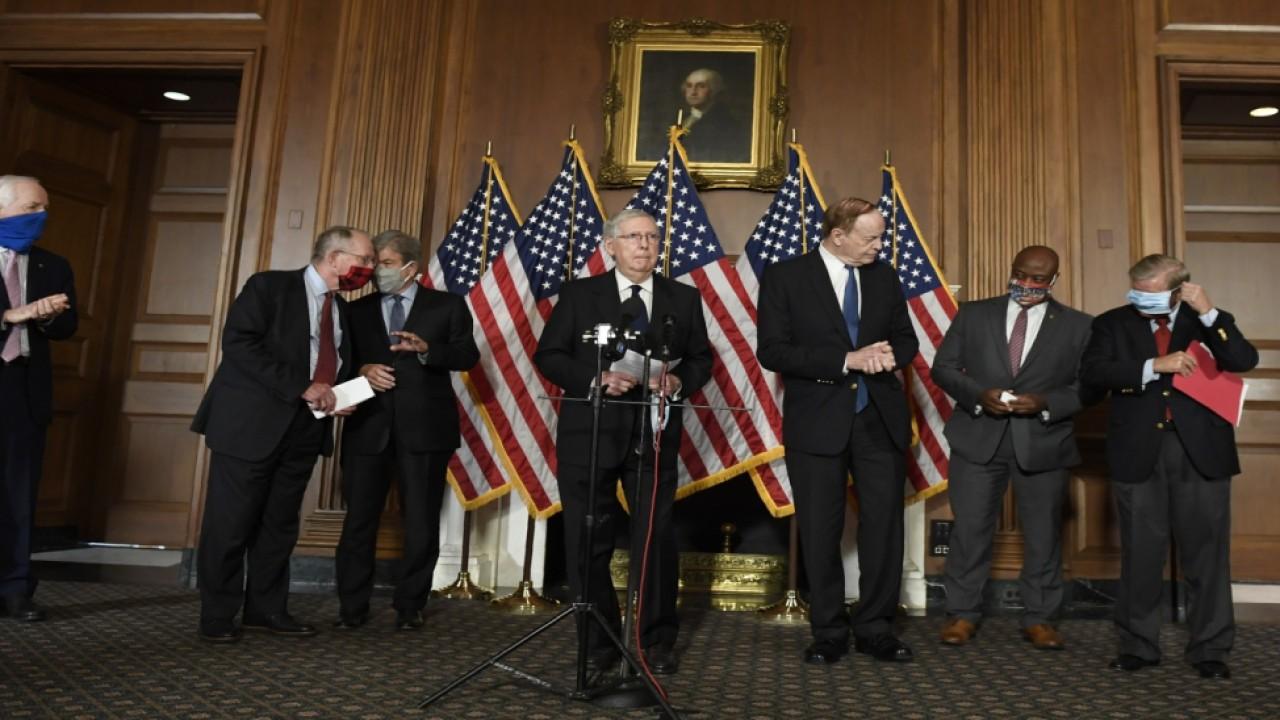Blue-state tax break becomes a flashpoint in coronavirus-relief bill
Democrats say $10,000 limit on state and local deductions hurts states’ ability to fund services; Republicans mock effort to repeal the cap
WASHINGTON -- Rep. Tom Suozzi (D., N.Y.) knows his bid to repeal the $10,000 cap on state and local tax deductions is a long shot for inclusion in any final coronavirus-relief bill. He has seen the mockery from Republicans, who criticize Democrats for proposing a tax cut for the rich.
But for Mr. Suozzi, restoring the tax break is urgent, central to New York's ability to keep high-income residents from fleeing and to finance a progressive state government that can respond effectively to the pandemic.
"We're losing taxpayers when we need them most," he said. "The people who can't afford to move or just don't want to move are the ones left behind holding the bag."
The $137 billion proposal would temporarily eliminate the $10,000 cap on the state and local tax deduction for 2020 and 2021. House Democrats included it in the virus-relief bill they passed in May, and it represents about 4% of the total price tag. That is separate from nearly $1 trillion proposed in direct aid to state and local governments.
The tax-deduction proposal is now wrapped up in broader negotiations between the Trump administration and congressional Democrats, and it has become one of the prime points of attack that Republican leader Mitch McConnell of Kentucky has been using against his Democratic counterpart, Minority Leader Chuck Schumer of New York.
"The Democratic leader is still refusing to let struggling Americans get another dime unless he gets a massive tax cut for wealthy people in blue states that has nothing to do with the coronavirus," Mr. McConnell said Monday.
CALCULATE HOW MUCH MONEY YOU'D RECEIVE FROM THE SECOND STIMULUS CHECK HERE
Mr. Schumer said Tuesday that he favors keeping the provision in any relief bill because it is important to states and affects middle-class households throughout New York and the country. He hasn't said that he would refuse to support a bill if it didn't include the tax provision.
Democrats' insistence on raising the issue -- over objections from progressive tax experts who say too much of the benefit goes to the rich -- shows just how important the deduction is to a party that counts upper-middle-class residents of urban areas as a core part of its base. The current advocacy signals that Democrats will press to repeal the cap if they have full control of the government after the election.
They might face objections in their own ranks. In December, 16 Democrats voted against a stand-alone bill to temporarily repeal the deduction cap and raise the top marginal income-tax rate. That group was a mix of progressives and representatives from low-tax states where the deduction helps less.
NEARLY HALF OF US JOBS LOST TO CORONAVIRUS COULD BE GONE PERMANENTLY, POLL FINDS
Before the 2017 tax law, individuals who itemized their deductions could subtract their state and local taxes from their income on federal tax returns, with few limits. (Those facing the parallel alternative minimum tax already lost their deductions in that system.)
The break's benefits were concentrated in places where people have higher incomes and must pay higher state and local taxes, including New York, New Jersey and California.
Lawmakers from those heavily Democratic states had little sway in 2017, when the Republican Congress and President Trump capped the break at $10,000 and raised the standard deduction, which meant fewer people could choose to itemize. They used the extra revenue to cut taxes elsewhere, including lower individual tax rates and larger child tax credits. Most Americans -- in every state -- are paying less in taxes now than they did before the 2017 tax law.
Some middle-income households are being hit by the deduction cap. Democrats emphasize that middle income can mean different things in different regions; an income of $125,000 in New York City doesn't go as far as it does in Nebraska. Still, 57% of the benefit of the House proposal would go to the top 1% of households, according to the Tax Policy Center, a Washington research group run by a former Obama administration official.
WHITE HOUSE, REPUBLICAN PROPOSAL CUTS JOBLESS AID FROM $600 TO $200
The cap's effects aren't just about who pays the additional taxes -- a point its defenders make in trying to connect it to the new coronavirus. Before the cap existed, New York and New Jersey could raise taxes on high-income residents knowing that the deduction would mean that the federal government would pick up part of the cost.
Now, any New York state tax increase gets passed along to New York taxpayers in full. At the margins, that can affect property values and people's willingness to leave for a low-tax state, particularly as remote work becomes more possible.
With New York facing a $14 billion revenue shortfall during the recession and pandemic, those changes are tough on a state that designed its tax code assuming that the deduction would exist. New York gets about half its personal income-tax revenue from the top 1% of households.
"We use those resources to make investments in critical progressive priorities," said Michael Schmidt, the state commissioner of taxation and finance. "That's a real achievement, particularly in this era where the federal government has been falling short."
Write to Richard Rubin at richard.rubin@wsj.com




















